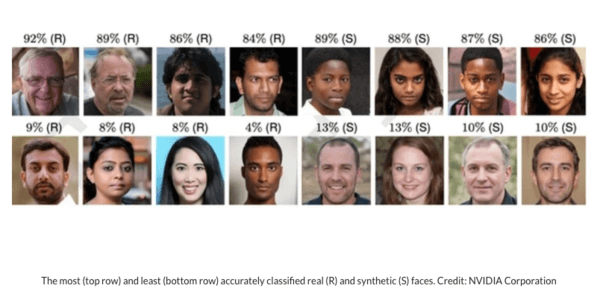
On the 15th of October our book “Real Fake – Playing with Reality in the Age of AI, Deepfakes and the Metaverse” has been released. It is our take on synthetic media, deepfakes, fake news, conspiracy theories, memes, internet culture, Generation Z and Alpha, crypto, narrative economics, virtual humans, CGI influencers, vTubers, NFTs, DAOs, VR, Web3, the Creator Economy and the Metaverse. Real Fake is about how humans continuously manipulate reality and how new digital technology tools enable us to go one step further in this ancient game.
Who Is Behind QAnon?
“Using machine learning, separate teams of computer scientists identified the same two men as likely authors of messages that fueled the viral movement.”
J.P. Morgan: Opportunities In The Metaverse
“The elements of a new digital age are converging at scale. The metaverse is the driving force bringing these elements together in a unified immersive experience. We are not here to suggest the metaverse, as we know it today, will take over all human interactions, but rather, to explore the many exciting opportunities it presents for consumers and brands alike. Whether it’s large tech players such as Microsoft planning to create realistic workspaces, or Ariana Grande holding a concert in Fortnite, the opportunities presented by interactive, digital worlds seem limitless. The metaverse will likely infiltrate every sector in some way in the coming years, with the market opportunity estimated at over $1 trillion in yearly revenues.”

Goldman Sachs Research: Framing the Future of Web 3.0
“We arrive at a ~$2.6tn total market opportunity and in the most bullish scenario, at a ~$12.5tn opportunity.”
- Goldman Sachs take on “Web 3.0”:
- Likely more control by the user of their data (including data residing on-device);
- Likely a more micro focus – a mean reversion on scale (either in end market being tackled or in relationship between the platform and the user);
- The rise of individual as creator & creator monetizing their content more directly with “fans”;
- Increasingly decentralized (with the possible breakdown of the mobile operating system/app store distribution model over the next 5-10 years ); &
- Flexibility (if not innovation) on payment mechanisms aimed at a mix of themes, including decentralized privacy and anti-establishment.

Bots and Fake Accounts Push China’s Vision of Winter Olympic Wonderland
“With bots, fake accounts, genuine influencers and other tools, China has been able to selectively edit how the events have appeared, even outside the country, promoting everything that bolsters the official, feel-good story about the Winter Olympics and trying to smother whatever doesn’t.”
Meta’s Foo Fighters Super Bowl VR concert failed in the most basic ways

“It’s safe to say that last night’s VR Foo Fighters concert didn’t go how Meta planned.
The hotly anticipated event promised to deliver a unique metaverse-fueled concert experience for Meta Quest 2 owners following yesterday’s Super Bowl. Given the popularity of similar concerts hosted by platforms like Fortnite, many expected this would be a massive PR win for Meta and its metaverse.
In reality, easily avoidable technical issues left many fans out in the cold.”
Based on the successful concerts in Fortnite, Meta took a shot with Foo Fighters and missed. The conclusion is that Meta didn’t go all in: many VR participants had connection problems and others felt the concert was optimized for an old skool 2D experience. Decide yourself; you can watch the concert on Foo Fighters Facebook page. What will Meta’s next attempt be..?
AI Generated Faces Are More Trustworthy Than Real Faces Say Researchers Who Warn of “Deep Fakes”

“Our evaluation of the photo realism of AI-synthesized faces indicates that synthesis engines have passed through the uncanny valley and are capable of creating faces that are indistinguishable – and more trustworthy – than real faces.”
“A third study asked 223 participants to rate the trustworthiness of 128 faces taken the same set of 800 faces on a scale of 1 (very untrustworthy) to 7 (very trustworthy).
The average rating for synthetic faces was 7.7% MORE trustworthy than the average rating for real faces which is statistically significant.”
In how many years will the discussion shift from ‘Does the synthetic product pass the uncanny valley?’ to ‘How much better does the synhetic product scores on ‘realness’, ‘trustworthy’, ‘friendliness’ then real humans?‘
MUST WATCH: Why You Can’t Just Screenshot An NFT
MUST WATCH: Why Some See Web 3.0 as the Future of the Internet
Contact
Real Fake is a weekly newsletter in which SogetiLabs’s Research Institute VINT examines the future where synthetic reality becomes part or our objective reality. We investigate the impact of new technology on people, organisations and our society. If you have any questions or comments, do not hesitate to contact us. You can reach us at vint@sogeti.com.

 English | EN
English | EN 